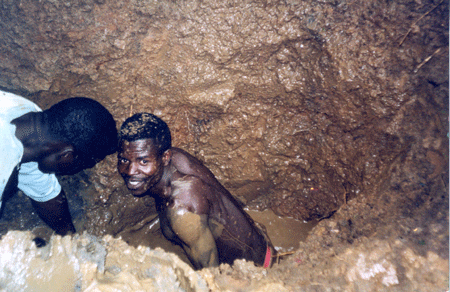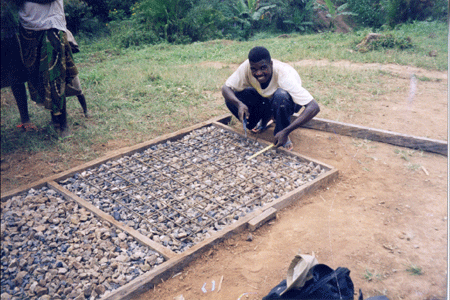Cameroon Background
Cameroon has common boundaries with 6 other African countries: Nigeria; Chad; the Central African Republic; the Republic of Congo; Gabon, and Equatorial Guinea. The country covers an area of 475,440 km2 and has a population of 10 million, most of whom are subsistence farmers. The vegetation varies from dense rain forest in the south to savanna and steppe in the north. The topography varies from the plateau in the south (600m a.s.l.), to the line of rounded volcanic hills, mountains and lakes that stretch from Mount Cameroon in Buea (4,070m a.s.l.) through the Muanenguba region towards the Adamawa Highlands and levels out at the Lagone Basin in the far north. The projects so far have taken place in the savanna region of Bangem in the English-speaking South West Province of Cameroon. Annual rainfall is approximately 2,000mm, with the rainy season occurring between May and October. In the dry season, temperatures peak at 35 degrees Centigrade. Communications and transport are poor. The staple diet is maize, cocoyams, cassava and beans. Coffee is the major cash crop.

Pic: A member of the Nian community volunteers to dig out a spring as the SAFAD engineers attempt to increase dry season yield in his village.
Partner
SOWEDA : SAFAD has been working with SOWEDA, a local NGO, since 1989. The collaboration began when the current head of the Post Harvest Food Loss Reduction Unit at SOWEDA, Chris Ekungwe, learned of SAFAD whilst studying at Silsoe. He initiated the link between SAFAD and Cameroon, and remains SAFAD’s contact to this day. SOWEDA have provided assistance with transport, accommodation, communication and contacts. The projects are funded partially by the villagers and partially by the British High Commission.
Type of work
To date, the projects have mainly involved the surveying for and provision of gravity-fed water supply systems, in addition SAFAD has undertaken an irrigation project, and a land capability classification. Previous projects have done much to alleviate hardship as villages often rely on water sources which are vulnerable to pollution and are sited some distance from the village.
Project
SAFAD has been carrying out projects in Cameroon since 1988, in conjunction with the local NGO – the South West Development Authority (SOWEDA). The main aim of the current project is to provide safe water supplies to the village of Muanyet, using appropriate technology.

Pic: The Banteg water technician, Tayong Augustine Cha, helps the new SAFAD volunteers to construct slabs for the demonstration pit latrines built in his village.
Volunteer Activities
* Overseeing the construction of a gravity-fed water supply in the village of Muanyet.
* Training community-selected representatives in pipe and tap maintenance, as well as book-keeping.
* Constructing latrine slabs.
* Trench digging and forest clearance for the installation of pipes.
* Setting out a pipeline route for community digging.
* Constructing spring boxes, break pressure, reservoir tanks and tap stands.
* Conducting interviews and testing water quality to evaluate the success of previous projects, as well as assessing future needs.
* Compiling project and funding proposals.
* Raising awareness of water, health and hygiene issues. Four new volunteers will commence work in Cameroon from October 2002.
Written by Jay Bentley, Cameroon Project Appraisal Officer.